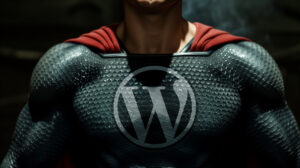Welcome back to Answering the RFP where we help you engage in strategic Q&A during the website sales process, because every clearly answered question is a golden opportunity to build trust and win clients.
We’re in the middle of a series addressing the biggest RFP question of them all, “what’s the project going to cost!” And there are several factors we’ve been reviewing that contribute to pricing. We’ve already talked about how the make-up of the client team is one major factor, and last time we covered how page count contributes to cost. In this video we’re going to cover content density and complexity, and then move on to the remaining factors: Design Expectations, Advanced Features, and Accessibility over the next few videos.
Last time I explained why page count is not necessarily a huge factor in price due to the database-driven nature of today’s content management systems. Far more relevant is a website’s content density and complexity.
You see, not all webpages are created equal. Some blog posts, for example, contain short simple blocks of text with an image or two. On the other hand some pages, like on a credit union’s website contain lengthy and detailed charts and tables. Product pages often contain tabs filled with technical specifications, features and benefits bullet points, and FAQs accordion with even more detailed content. Scholarly content can be quite lengthy, and content anchored footnotes, tooltip details, and lots of links to supporting content. Long form story pages can contain all sorts of special layouts, with multimedia elements, and extensive supporting information.
Because there is so much variation to any page’s content density and complexity, evaluating this aspect of a potential project is essential to determine its cost.
Now for a redesign project, you can evaluate the current site’s content to get a handle on this factor. Of course you shouldn’t assume the new website will contain all the existing content, since clients often want to condense and consolidate in a redesign.
But just because they may want fewer pages and more concise copy, doesn’t mean the costs will be lower. Working through all the old content, in order to determine how to condense and consolidate is an extensive content design task. Even though the final product will have fewer pages and less content than it began with, doesn’t mean the costs should be lowered. It’s so important to sufficiently inventory existing content when determining a redesign project’s cost.
Brand new sites, on the other hand, won’t have anything to evaluate in this regard. And so gauging content density and complexity is more difficult. But you can show examples of pages with simple content and contrast them with some containing more complex content—and then ask the prospect to ball park where they fall on the content density and complexity spectrum.
If a client is on the higher end of the spectrum, then page count does become a much more significant factor. Because combining complex content and high page count will involve a lot of work.
So if there is complex content and high page count, you’ll want to break things down into more discrete categories. Identify a few of primary content types, such blog posts, product or service pages, or technical detail pages and set some expectations on the density and complexity of each type.
The combo of page count and density and complexity factors significantly impact a project’s cost. And so you need to do your homework, and ask enough questions in order to properly price a project. Asking these kinds of questions goes a long way toward demonstrating attention to detail and commitment to a project’s ultimate success—and that builds trust which leads to winning new clients.
Next time we’ll consider a client’s visual design expectations for their website. And that spectrum like content density and complexity can have a significant impact on pricing.
So until next time…
Be Clear. Build Trust. Win Clients.



